
Understanding Color Intensity Measurement: The Role of Spectrophotometers
Color intensity measurement evaluates how light or dark a color appears, often referred to as its chromaticity or fullness. While it doesn't always determine the exact hue, it provides essential data on a color's optical density, helping professionals monitor ink application, material consistency, and contrast.
This insight explores what color intensity actually measures, its significance in various applications, how it differs from full color evaluation, and why advanced tools like spectrophotometers are indispensable for achieving accurate and repeatable results.
Get in touch
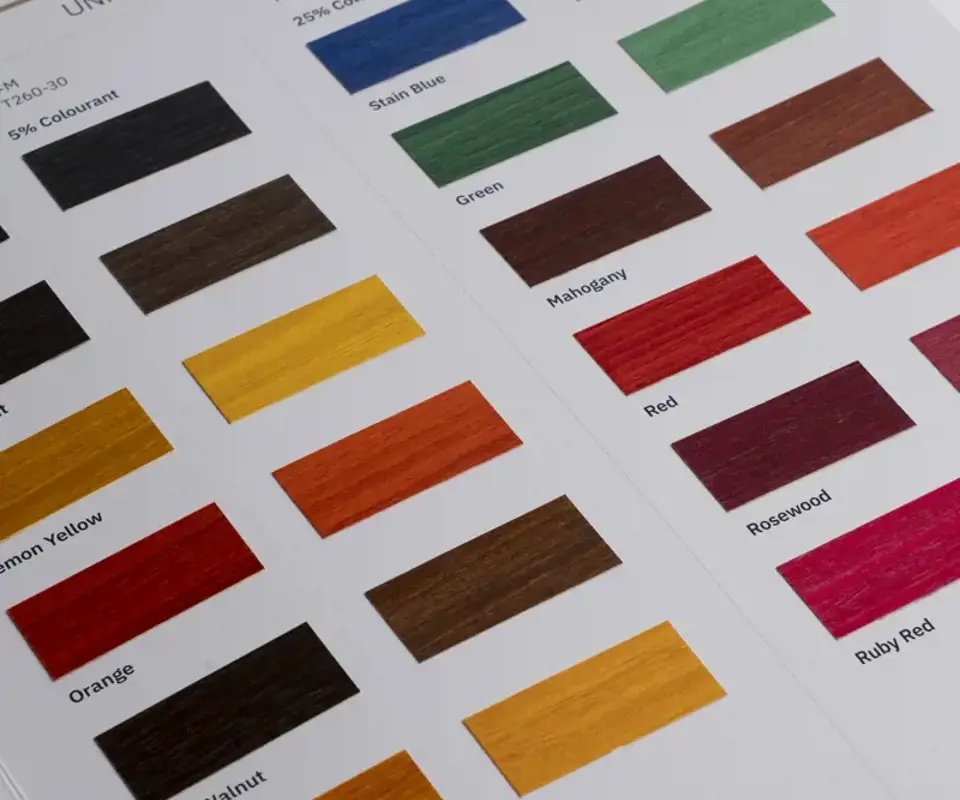
What is color intensity measurement?
At its core, color intensity measurement quantifies the perceived "strength" or "darkness" of a color. It's crucial for ensuring consistency in manufactured products, calibrating digital displays, and maintaining aesthetic appeal. For instance, in textiles and fabrics manufacturing, precise color intensity measurement ensures uniformity across different batches.
It's vital to understand that intensity, while a key aspect, is not the same as the color itself. Intensity simply indicates the lightness or darkness of a color; it doesn’t confirm whether the color's hue is accurate. For example, if an ink becomes contaminated and its hue shifts, you might still obtain a correct intensity reading, even though the color looks noticeably different. If you need to verify that a color matches a specific target, such as a defined Lab* value, a spectrophotometer is required for comprehensive color measurement.
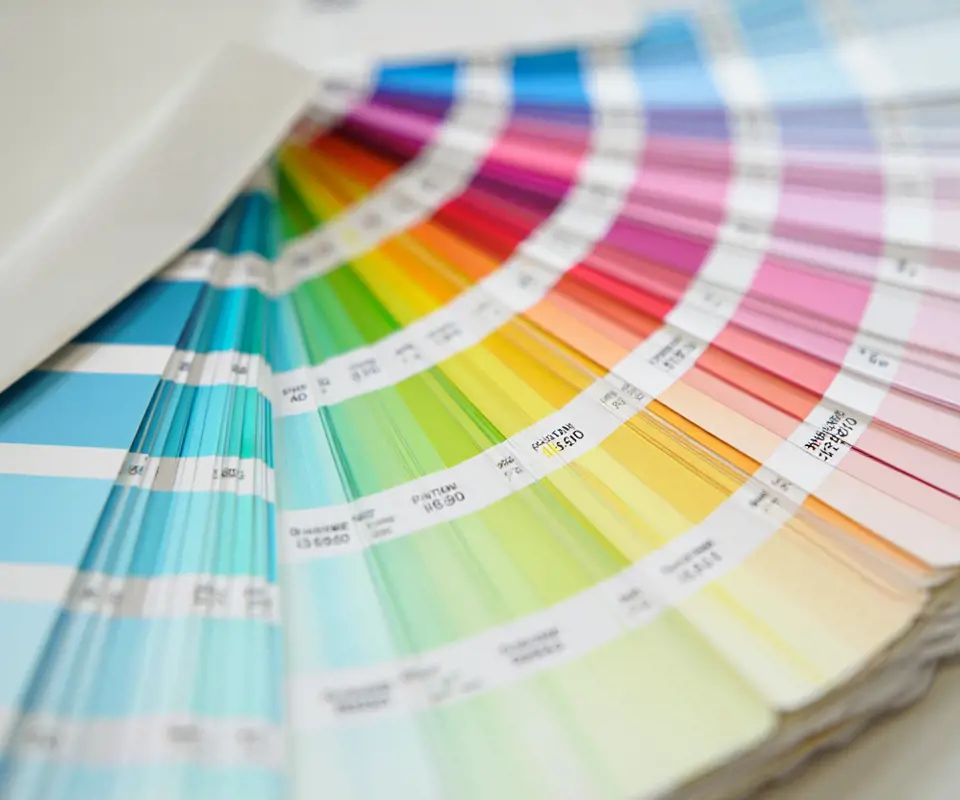
Why color intensity measurement is vital?
Measuring color intensity is crucial for ensuring accurate and consistent color reproduction, especially when creating marketing materials such as brochures or fan decks. Here's why:
-
Consistency Across Different Media: color intensity measurement guarantees that the same color appears consistently across various materials (e.g., brochures, fan decks, print, and digital platforms). This is essential for maintaining brand integrity and ensuring that the colors used in promotional materials match those in other branded assets.
-
Accurate Color Matching: by measuring color intensity, designers can precisely reproduce colors that reflect the brand’s identity. This is particularly important in industries where color plays a critical role, such as fashion, cosmetics, and automotive. Accurate color matching helps avoid discrepancies between design mock-ups and the final printed material.
-
Quality Control: color intensity measurement tools help monitor and maintain the quality of print materials. They ensure that the final output matches the intended design and that no color fading, inconsistency, or errors occur during the production process.
-
Effective Marketing and Customer Appeal: for brochures or fan decks, the right color intensity can capture attention and convey the right message. Consistent color reproduction ensures that the marketing materials evoke the desired emotional response from the target audience, enhancing customer engagement and perception.
-
Standardisation Across Print Runs: when producing brochures or fan decks in large quantities, color intensity measurement ensures that every copy reflects the same colour accuracy, regardless of print batch. This helps maintain uniformity and avoids any unexpected color shifts that might occur in different printing processes.
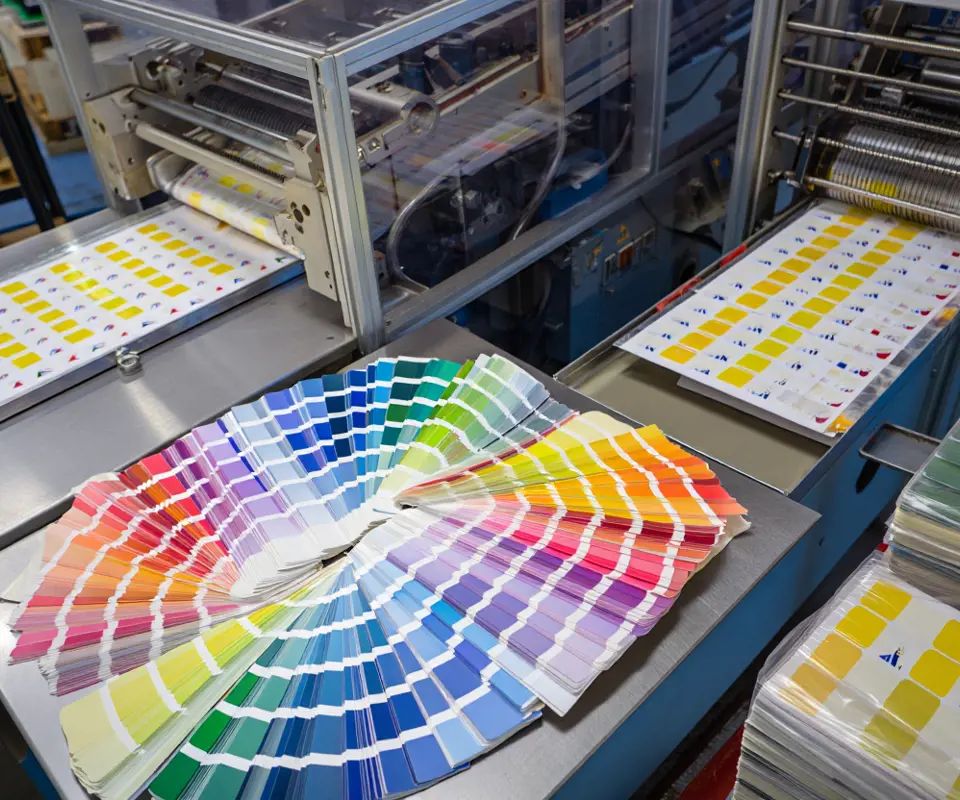
Which instruments are best for color intensity measurement
While simple densitometers can provide useful quantitative data on ink film thickness or contrast, they represent only a small part of the full color picture perceived by the human eye. Color perception is influenced by numerous variables, including light conditions, material texture, and human visual differences. Densitometers, which rely on light absorption to measure density, offer limited insight into subtle color shifts and overall consistency, which are critical for precise color intensity measurement.
Spectrophotometers, however, offer a far more comprehensive approach to color intensity measurement. These sophisticated devices analyze spectral data from a sample, capturing information across multiple wavelengths and geometric configurations.
Unlike densitometers, spectrophotometers can account for reflectance, saturation, and substrate variations, resulting in highly accurate and repeatable color data. This capability is critical for maintaining stringent quality control in professional print, coating, and other manufacturing environments where consistent color intensity measurement is paramount.
As industries evolve with new materials—such as UV inks, high-gloss, or matte finishes—the adaptability of spectrophotometers to these variables makes them the gold standard in color intensity measurement. Their ability to provide detailed spectral curves allows for precise analysis of not just intensity but also hue and saturation, offering a complete color fingerprint.
If you need more info
Get in touch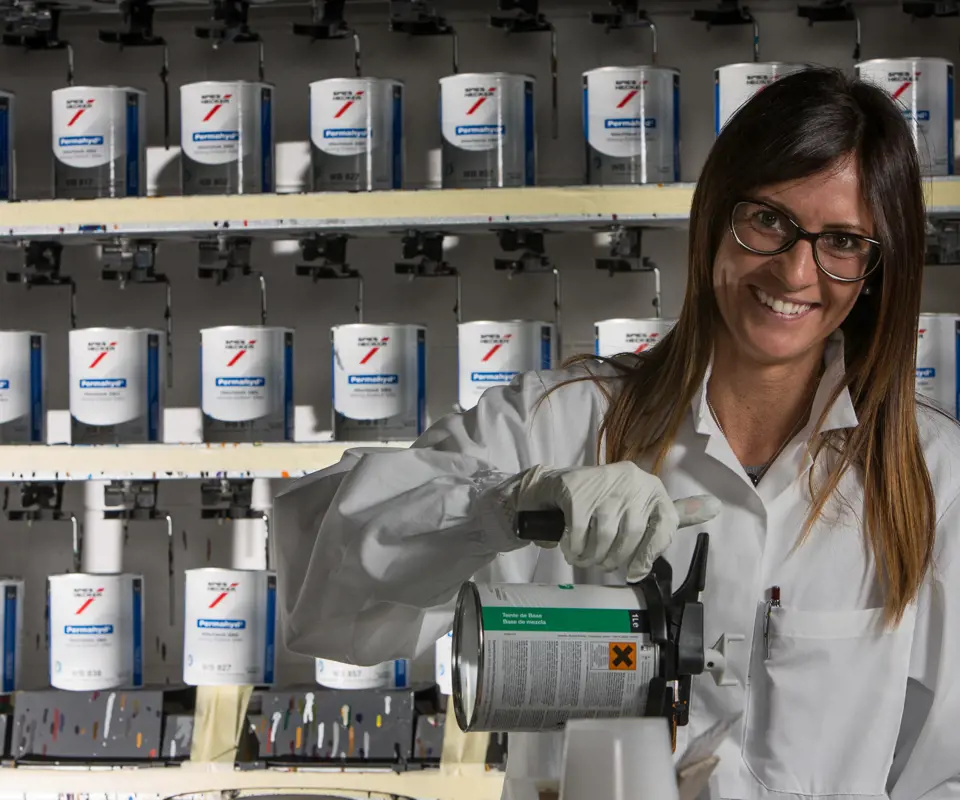
Importance of color intensity measurement across industries
Color intensity measurement is crucial in various sectors where color consistency and quality are paramount.
-
Manufacturing and Automotive - Ensures consistency in product appearance and quality, particularly for automotive paints and coatings.
-
Fashion and Textile - Guarantees color matching for fabrics and maintains brand identity across collections.
-
Printing and Packaging - Maintains consistent branding and high-quality printing for packaging materials and marketing.
-
Paint and Coatings - Ensures accurate color intensity for aesthetic and functional durability in coatings and paints.
-
Technology and Electronics - Ensures consistent display and lighting color quality, important for user experience in devices and screens.
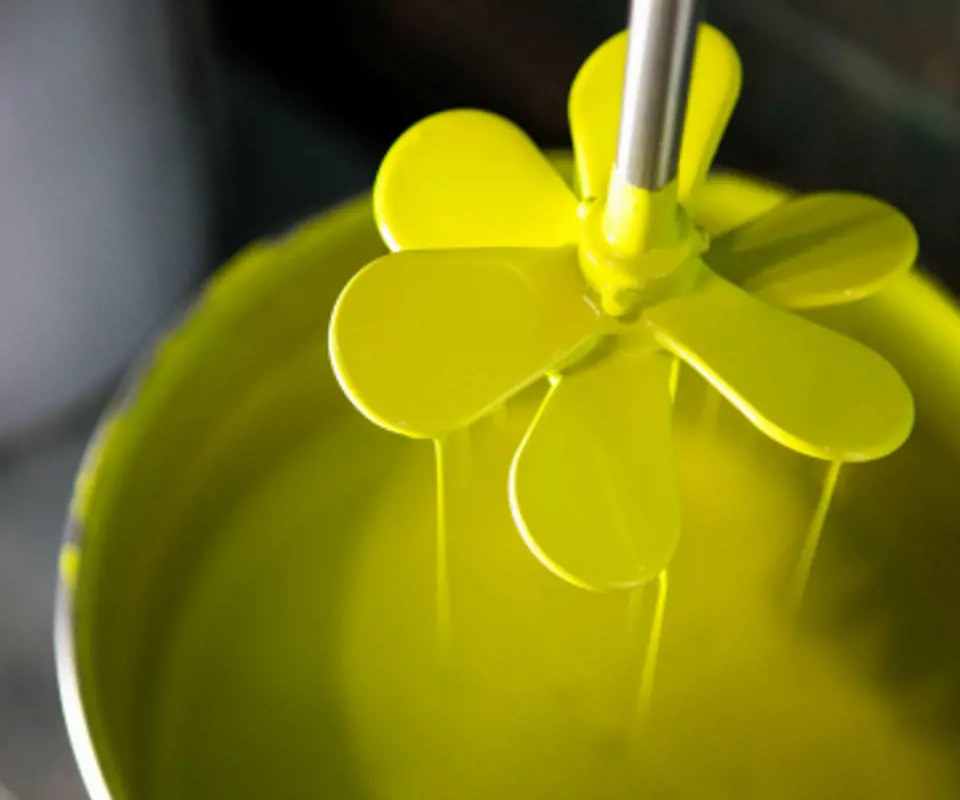
How Color Project European measures color intensity accurately
At Color Project European, precision in color intensity measurement and overall color control is achieved through state-of-the-art technology. Our core tools include:
-
Spectrophotometers: as highlighted, these provide accurate color readings by capturing the full spectral data of each sample—essential for fine-tuning formulations, verifying color intensity, and ensuring consistent results.
-
Color Matching Software: powered by advanced algorithms, this software simulates pigment interactions to create formulas that precisely match target shades.
-
Digital Colorimeters: these portable devices are used on-site to verify that applied colors meet original specifications and expected color intensity.
Despite this advanced toolkit, accurate color intensity measurement still presents challenges. Variability in pigment quality, substrate differences, and environmental factors such as lighting, temperature, and humidity can all affect results. Human perception also plays a role, as individual differences in color vision can lead to varying assessments.

1. How do you measure color intensity?
Color intensity measurement is primarily achieved using advanced instruments such as spectrophotometers. While densitometers can measure optical density (a form of intensity), spectrophotometers offer a much more comprehensive approach.
2. How do you calculate color intensity?
Color intensity is not typically calculated as a single, simple numerical value in the same way as, for example, a chemical concentration. Instead, it is assessed by analyzing the spectral data obtained from a spectrophotometer. The "intensity" of a color relates to its chromaticity, saturation, and lightness. Spectrophotometers provide readings that can be translated into color spaces like Lab* (Lightness, a-axis, b-axis), where the L* value specifically represents lightness (or perceived intensity/darkness), and the a* and b* values represent the color's chromaticity or "colorfulness," which also contributes to the perception of intensity. Higher saturation, for example, often correlates with higher perceived color intensity.
3. What is the unit of color intensity?
There isn't a single, universally accepted "unit" for color intensity in the same way there is for length or mass. Instead, color intensity measurement is typically expressed through values in specific color spaces or indices derived from spectral data. For instance, in the Lab* color space, the L* value (Lightness) directly relates to intensity, ranging from 0 (pure black/no intensity) to 100 (pure white/maximum lightness). Other related metrics like chroma (C*) or saturation can also quantify aspects of intensity or "colorfulness," but they are not standalone units. Densitometers provide density units, which are logarithmic measures of light absorption and directly indicate the optical intensity or darkness of a sample, particularly in print.